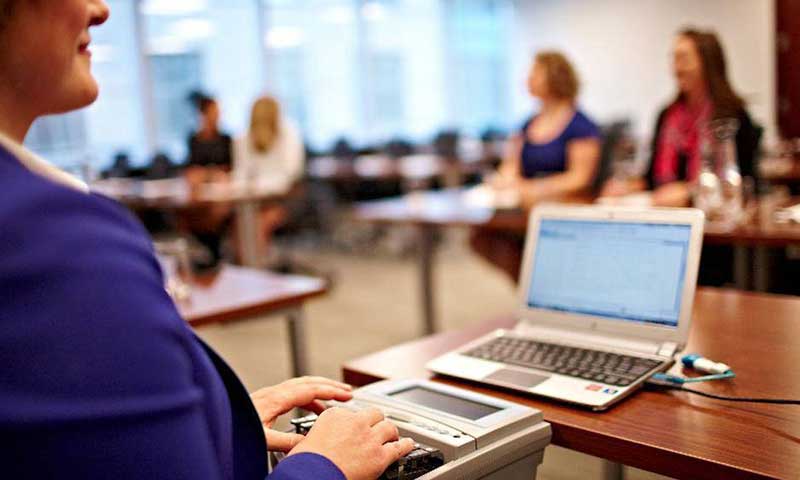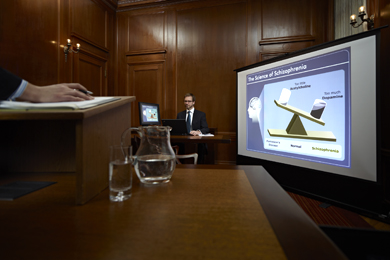Mesmerize the Jury: Essential Elements of a Powerful Trial Discussion
In the world of lawful advocacy, the ability to captivate a court is extremely important to the end result of a trial (trial presentation). Essential components such as recognizing the audience, crafting a compelling story, and understanding verbal and non-verbal communication are vital elements of an efficient presentation. Moreover, the critical use of aesthetic aids can significantly boost understanding and retention of key debates. As these variables link, they develop a natural strategy that not only educates yet likewise involves jurors on several degrees. What details strategies can truly change a conventional presentation into a memorable experience for the court?

Understanding Your Audience
Understanding your audience is a critical aspect of effective trial presentation. A successful presentation pivots on the capacity to understand the demographics, worths, and proneness of jurors. This comprehension informs how disagreements are mounted, proof exists, and sob stories are crafted, ensuring that the message resonates with the jurors on a personal level.
Research indicates that jurors originated from diverse backgrounds and may have varying levels of recognizing pertaining to lawful process (trial presentation). Thus, it is critical to stay clear of lawful lingo that might estrange or puzzle them. Rather, utilizing clear, relatable language promotes interaction and comprehension. Furthermore, understanding the jurors' potential biases and life experiences allows the test speaker to prepare for arguments and address worries proactively.
Effective trial discussion likewise entails observing jurors' reactions during the process. Engaging with jurors as individuals rather than a cumulative unit is necessary in cultivating a strong link in the courtroom.

Crafting a Compelling Story
Crafting a compelling narrative is vital in directing jurors via the complexities of a case. A well-structured story not only streamlines elaborate lawful ideas but also engages jurors on an emotional degree, making the info more relatable and remarkable.
To accomplish this, attorneys must start by determining the core message they want to convey. This message must reverberate with the jurors' values and experiences, fostering a connection that transcends simple realities. The narrative must unfold rationally, offering events in a clear series to prevent confusion. This sequential method can aid jurors follow the development of occasions, emphasizing cause and result.
Including human aspects-- such as personal stories or narratives-- can better improve the story's influence. These components stimulate empathy, enabling jurors to envision the consequences of the instance on the real worlds. Furthermore, using a constant motif throughout the presentation reinforces the primary disagreement, making it much easier for jurors to preserve essential points.
Inevitably, a compelling narrative changes a trial presentation from a mere address of realities into an influential tale that astounds the jury, motivating them to ponder with both reason and feeling.
Using Aesthetic Help
Integrating visual aids right into a test discussion can substantially improve jurors' comprehension and retention of details. Aesthetic materials such as charts, layouts, pictures, and videos can transform intricate lawful ideas and evidence into conveniently absorbable styles. By engaging numerous detects, these aids allow jurors to envision the case's crucial elements, making it simpler for them to adhere to along and realize complex details.
Furthermore, properly designed aesthetic aids can stress crucial about his points and emphasize connections between different items of evidence. For instance, timelines can properly show the series of events, while annotated photos can clear up specific information appropriate to the case. This not only help in understanding but likewise reinforces the story presented by the lawyer.
Excessively intricate or chaotic visuals may overwhelm jurors and detract from the message. Eventually, reliable visual communication can be an effective device in persuading jurors and helping them reach notified verdicts.
Mastering Verbal Communication
Effective spoken interaction is essential in a test presentation, as it serves as the primary methods via which lawyers communicate their disagreements and attach with jurors. Simpleness in language fosters understanding and helps jurors realize complicated issues presented throughout the test.
In addition, tone and pacing dramatically impact how messages are obtained. A positive tone conveys authority, while appropriate pacing permits jurors to soak up info without feeling overwhelmed. Lawyers must also vary visit homepage their singing inflections to highlight essential points and keep jurors' passion throughout the presentation.
Additionally, the organization of verbal debates is necessary. Structuring the narrative rationally and coherently helps jurors follow the lawyer's line of reasoning, making it less complicated for great site them to maintain essential info. Using influential techniques, such as storytelling, can also boost the emotional vibration of the arguments offered, thus developing a more extensive link with jurors.
Ultimately, mastering spoken communication not just reinforces an attorney's instance however additionally fosters trust fund and rapport with the jury, considerably boosting the opportunities of a favorable decision.

Involving With Body Movement
Nonverbal communication plays a crucial role in test presentations, frequently communicating messages that words alone can not reveal. Body language, incorporating gestures, pose, face expressions, and eye call, substantially influences just how jurors perceive the reputation and genuineness of the speaker. A positive stance, with shoulders back and an open position, can infuse count on, while closed-off body movement may suggest defensiveness or unpredictability.

Faces should reflect the emotions related to the case, strengthening the story existing. A sincere expression throughout an emotional moment can evoke empathy and strengthen the emotional charm. Ultimately, grasping body movement is important for reliable trial discussions, as it enhances verbal interaction and develops a compelling existence that reverberates with the court.
Conclusion
In conclusion, captivating the court requires a strategic method that includes recognizing the audience, crafting a compelling narrative, making use of aesthetic help, grasping spoken communication, and engaging with body movement. Each component plays an important role in producing a powerful test presentation that resonates with jurors on both psychological and intellectual degrees (trial presentation). By incorporating these elements properly, lawyers can dramatically enhance their ability to persuade and influence jury decision-making